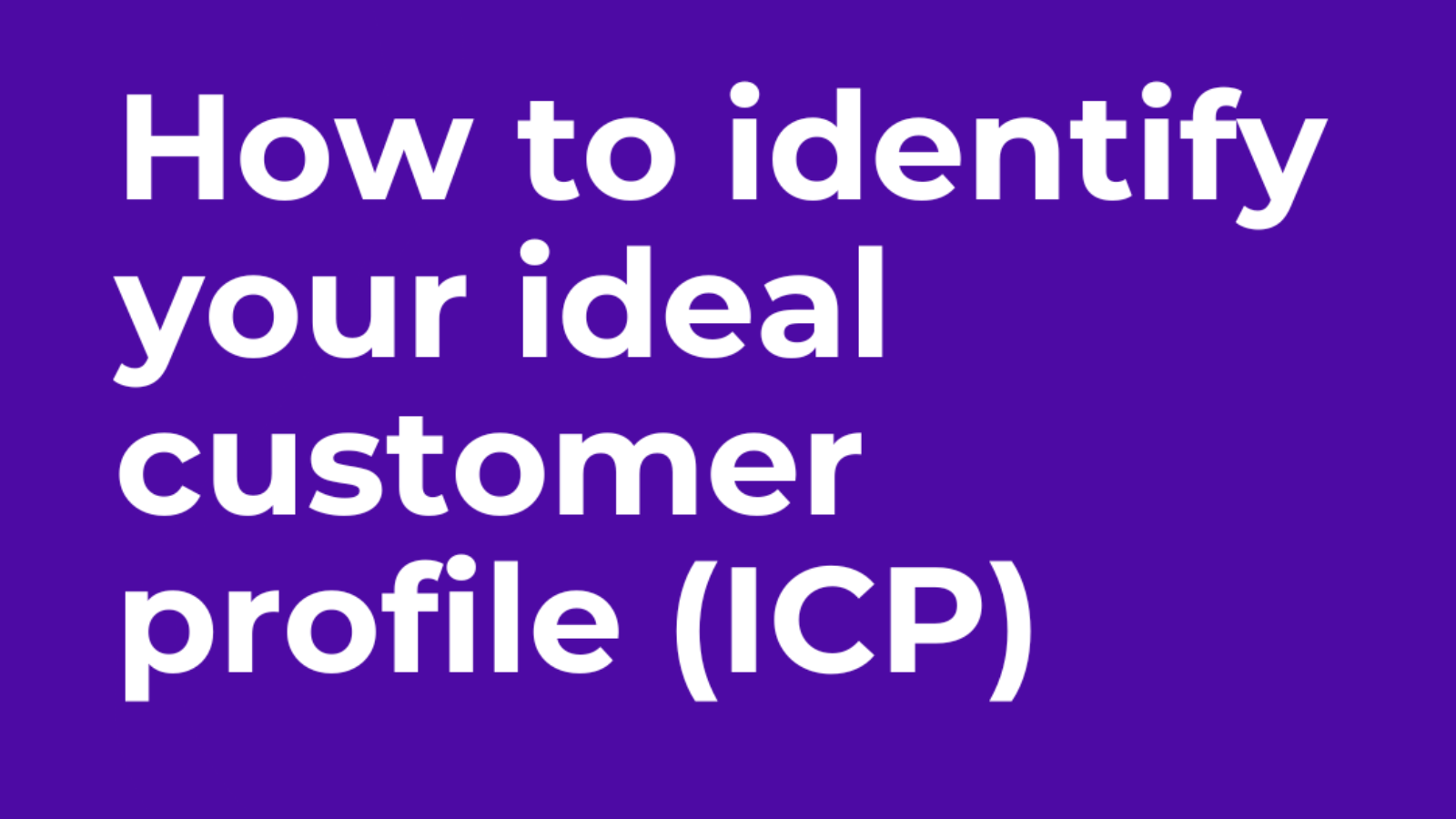Introduction:
In today’s rapidly evolving business landscape, understanding your audience is more crucial than ever. The shotgun approach to marketing is no longer effective. Instead, businesses need a targeted strategy that hones in on the specific needs and preferences of their ideal customers. This is where the concept of Ideal Customer Profile (ICP) becomes paramount. In this comprehensive guide, we will delve deep into the art of identifying your ICP, exploring the why, the how, and the transformative impact it can have on user engagement and lead conversion.
Table of Contents
I. Defining Ideal Customer Profile (ICP):
Before we embark on the journey of discovering your ICP, let’s establish a solid foundation by understanding what it is. Your Ideal Customer Profile is essentially a detailed description of the type of customer who would derive the most value from your product or service. It goes beyond demographics, encompassing factors such as behavior, pain points, and goals. Creating an ICP involves a meticulous examination of your existing customer base and market research to identify common characteristics.
II. The Power of Precision: Why ICP Matters:
- Tailored Marketing Strategies:
- Understandably, not all customers are created equal. Crafting a marketing strategy that resonates with a specific target audience is far more effective than a generic approach. Identifying your ICP allows you to tailor your messaging, content, and campaigns to address the unique needs and interests of your ideal customers.
- Improved Customer Acquisition:
- Pinpointing your ICP streamlines your customer acquisition process. By focusing your efforts on prospects who closely match your ideal profile, you increase the likelihood of converting leads into loyal customers. This efficiency not only saves resources but also accelerates growth.
- Enhanced Product Development:
- Your ICP serves as a compass not only for marketing but also for product development. Understanding the pain points and preferences of your ideal customers empowers you to create products or services that cater directly to their needs, fostering customer satisfaction and loyalty.
III. The Journey to Discovering Your ICP:
- Analyzing Existing Customer Data:
- Start by conducting a comprehensive analysis of your current customer base. Examine demographics, purchase behavior, and feedback. Identify patterns and commonalities that emerge, forming the initial building blocks of your ICP.
- Market Research and Surveys:
- Expand your understanding by conducting market research and surveys. In order to learn more about potential consumers’ preferences, difficulties, and expectations, this stage entails contacting them. Utilize tools like surveys, interviews, and focus groups to gather qualitative data.
- Competitor Analysis:
- Explore the landscape within which your business operates. Analyze your competitors’ customer base and identify gaps or untapped opportunities. Understanding the competitive environment can provide valuable insights into what your ICP might look like.
IV. Crafting Your Ideal Customer Profile:
- Demographics:
- Define the demographic characteristics of your ideal customer, including age, gender, location, and income level. This provides a foundational understanding of who your primary audience is.
- Psychographics:
- Delve deeper into the mindset of your ideal customer. Understand their values, interests, lifestyle, and preferences. This information is instrumental in creating content and campaigns that resonate on a personal level.
- Pain Points and Challenges:
- Identify the key challenges and pain points your ideal customer faces. Your product or service should offer solutions to these issues, positioning your brand as a valuable and indispensable partner.
- Goals and Aspirations:
- What are the objectives and desires of your ideal client? Knowing this allows you to align your messaging with their objectives, showcasing how your offering can help them achieve success.
V. Implementing Your ICP: From Theory to Action:
- Targeted Content Creation:
- Armed with the insights from your ICP, create content that speaks directly to your ideal customers. Whether it’s blog posts, social media campaigns, or email newsletters, tailor your messaging to address the specific needs and interests identified in your ICP.
- Personalized Marketing Campaigns:
- Develop marketing campaigns that target your ideal customer profile. Utilize personalized ads, special promotions, and targeted outreach to engage and convert leads within this specific demographic.
- Continuous Iteration:
- Your ICP is not set in stone. Markets evolve, and customer preferences change. Regularly revisit and update your ICP based on new data and feedback. This iterative approach ensures that your strategies remain aligned with the dynamic nature of your audience.
VI. Case Studies: Realizing the Impact of ICP in Action:
- Success Stories:
- Explore real-world examples of businesses that have successfully identified and targeted their ICP. These case studies offer valuable insights into the tangible benefits of precision targeting and how it translates into increased user engagement and lead conversion.
- Pitfalls to Avoid:
- Learn from the mistakes of others. Analyze cases where businesses failed to accurately identify their ICP or misaligned their strategies. Understanding these pitfalls helps you steer clear of common traps and refine your approach.
VII. Tools and Technologies to Aid ICP Identification:
- Customer Relationship Management (CRM) Systems:
- Leverage CRM systems to centralize customer data and gain a holistic view of your audience. These tools enable you to track customer interactions, preferences, and behaviors, facilitating the identification of patterns that contribute to ICP development.
- Data Analytics Platforms:
Make use of sophisticated analytics tools to mine big datasets for insights that may be put to use. Machine learning algorithms can help identify hidden patterns and correlations within your customer data, providing a deeper understanding of your ICP.
VIII. Conclusion:
In conclusion, the journey to identifying your Ideal Customer Profile is a transformative process that touches every facet of your business. From marketing to product development, precision targeting enhances your ability to engage users and convert leads. The dynamic nature of markets and customer preferences necessitates a continuous commitment to refining and evolving your ICP. By understanding the power of precision and implementing strategies informed by your ICP, your business can unlock new levels of success, creating lasting relationships with your ideal customers.

